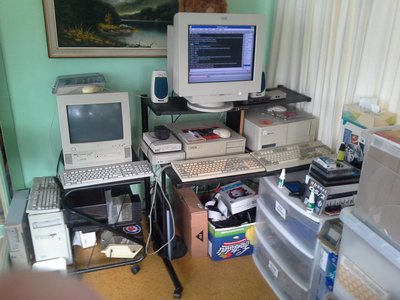Here's my approach. Maybe it provides some inspiration? If not, just consumes a few bytes of space on the Vogons server. 😁
Every one of my retro PCs has a floppy drive. All but two (PCjr and T-1000 RLHD) have 3.5" 1.44MB drives. All but three (PS/2 M30 286) have a CD-ROM drive. The biggest problem is starting from zero: Bare metal, nothing on the hard disk (if it has one), and need to get it bootstrapped. For that, I have a boot floppy with CD drivers for all the SCSI cards I have, IDE, and MKE / Sony / Mitsumi.
I haven't put together my essential collection CDs yet, but I do have one from back in the Win9x days with installers for DOS, Win 3.1, 95, 98SE, and ME -- plus an archive of things like PKZIP, then-common sound / video / net drivers, etc. That needs some updating, but it's basically what I'm going for now.
At this point, I should have a fully working system with CD, SCSI, and network access. All of my systems up to P-III have SCSI, all of my systems >386 have network cards. Pentium and up have USB (but not really that useful until my P-III / WinME machines.)
Many of my PCs, 386 through P-II, have internal ZIP drives. Those that don't, have SCSI for an external drive. To get something onto a 386 is at most <modern PC> -> USB drive -> <P-II> -> ZIP disk -> <386>, or via network / FTP.
I'm still too fascinated with keeping all the machines era-appropriate to move to SD and CF storage, so this gets me (at most!) three degrees of sneakernet from the modern world to as far back as the PCjr.





![20190925_170730[1].jpg](./thumbs/29954_47520d10f9afe36b32c9fd3fb68d60cd/20190925_170730%5B1%5D.jpg)
